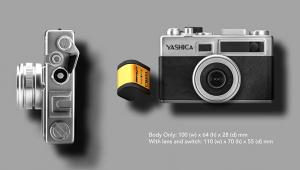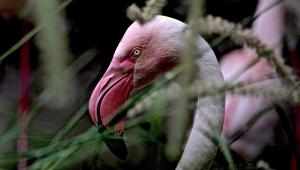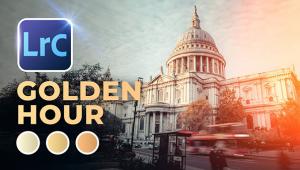Very well said, George. I have to say that I do 'hear' some of my images, though. From streams to cars, I hear and feel my images and others. There is no way to define our art. It is unique to each person. J.D.Parker
What a Photograph Might Mean

If you were a detective you would look for motive as a prime clue as to who did the deed, but how many times have you really thought about your own motivation for making photographs? The mystery all photographers eventually attempt to solve is: just motivates me to make pictures and to process images in my own unique way? Kind of like trying to figure out the meaning of life, I guess, and using your photography to help you answer a small part of that question.
There's no simple answer. Most photographers, myself included, are often baffled by their own motivation for shots other than those made as “documents” or for family occasions. Recording images as a sort of memory diary of loved ones is, at this point, hardwired into our DNA, or at the least accepted a part of the social fabric. The art photographer, however, attempts to go beyond that premise, although he or she might use the same subjects in their work. But most art photographers tend not to get too deep into the question, and often claim that analyzing the process too much stifles his or her creative instinct ("the picture tells the story") and that they just go with the flow, which I suppose is as good a way to consider that work as any other. But--there’s still that nagging question.
Critics have written that we photograph in order to acquire and control, to gather trophies, and say that these are innate human instincts that have found a ready vehicle in picture taking. Others see photography as more of a self-conscious act, or perhaps, better said, a “conscious of self” activity, and see the photographic process as a way to further define existence, in many cases via a sort of imaged autobiography.
Some express the need to always take it to another level--trying to reveal their inner self in every photograph. Others look for the universal in the individual image. Some play with the micro/macro mirror.
The speculation could go on—that photographs represent internalized forms in (often) more elaborate guise, that they represent repressed desires and sparsely remembered dreams, that they are indicative of a socio-political matrix, that they are an intellectual game made simple, etc. Followers of Freud, Plato Marx and other thinkers have had their go at analyzing photographers and photography, and while each may be part of the truth, there is no definitive statement simply because photographers produce such a diverse range of imagery. And there's that question of motive again.
If you get a chance, give a listen to a 19th century musical composition by Rimsky Korsakov entitled "Pictures at an Exhibition." Known as “program” music, it was part of a (slight) movement of composers to create music that would create certain images in the viewer’s mind. This piece was a reference to a suite of paintings in a museum and is the music they inspired in the composer. He, in turn, attempted to recreate the images as music, and thus bring the viewer back to the painting, a sort of artistic three-dimensional (multimedia?) experience of the 19th century. Other members of this school would pass out small poems or essays that would be used to steer the viewer to visualize places or moods during the playing of their compositions. Photographs are mute, of course, but the idea of association still holds forth. The difference, I think, is that modern art tends to ask you to create your own associations from an image, without a crib sheet or musical interlude to bring you into any preset “space.”
Generally, the degree to which we can analyze a photograph or a photographer’s motivation or indeed or own motivation is proportional to the amount of time we wish to spend doing it. There are so many layers to an image--spiritual, psychological, factual, emotional, and so forth--as well as the cultural layers self-evident in the subject matter, that even the simplest snapshot, accidentally made when taking the camera out of the bag or when the camera is handled by a child with no clue as to what the buttons do or mean, could be the subject of a doctoral thesis (and probably, somewhere, is.)
This complexity, and some would say absurdity, does not mean that the photographer should ignore the search for meaning in personal work; indeed, the complexity of images should feed the imagination more than stifle it.
The photographer has a very special relationship with his or her images. Only you can understand the depth of meaning, or disregard of meaning, in the images you make. And sitting back and knowing what you know about your photographs, and listening to others react to them, can be amusing or frustrating; the reaction is often based on the knowledge the viewer has about the photographer and their willingness to be open to what the image has to offer.
One of the main transformative processes in photography takes place in the time between when the image is captured and when it is finally “opened” on a large enough monitor to see if is sharp or looked at through a loupe on a lightbox. This space can be a day or, with rediscovered images, come many years later. This time and space process clarifies the vision, and puts it to the test of resonance--either it continues to hold power, or it remains in storage from another day, or ends up on the editing floor (these days the virtual trash bin.)
You do have to be careful, though. Some images that seem bland or unrevealing today can strike you like a thunderbolt years later. And those you think the jewels of your work later turn out to be derivative and make you wonder why you thought they were so great. But those images that stand the test of time, that remain vital to the photographer through the stages of life, are those that help define the photographer's vision and can help him or her solve the mystery of what their images say about who they are and where they’ve been.
This discussion is not meant to place the burden of meaning upon each image, or to say that each picture printed or indeed saved must be a personal, temporal and universal metaphor bound into one. There are just too many images made in a lifetime for that to make sense, something that’s even more evident today with the ease at which hundreds of images, and technically good ones, can be made in a day. In fact, where once technical grades made editing somewhat straightforward, there are much fewer “misses” from a technical standpoint today in every photographer’s work, so the edit has to go deeper that just tossing exposure and focus miscues.
All I can say is that photography is a way to gain a depth of understanding about yourself that is at once ineffable, makes the past and present a continuum, and remains as a form of visual diary that remains throughout your life, and after. The image does have power beyond words, and often beyond pretense. It fixes moments in time that no words or sound can recreate, and those moments are at once documentary and spiritual. Because pictures so easily tell about the external world, we have the option to look at them as signs from the internal world as well. It allows us to see above and below the surface, often to surprising depths, in one intuitive, split-second glance.
- Log in or register to post comments

Compaq International is committed to provide the highest quality power cable accessories. The company with it's ShrinkFit trademark stands leader in India and overseas market.
Power cable suppliers
Metal oxide surge arrester
Silicone insulators

it is real what you said! I have the same opinion and I want to read more about this subject!
















































